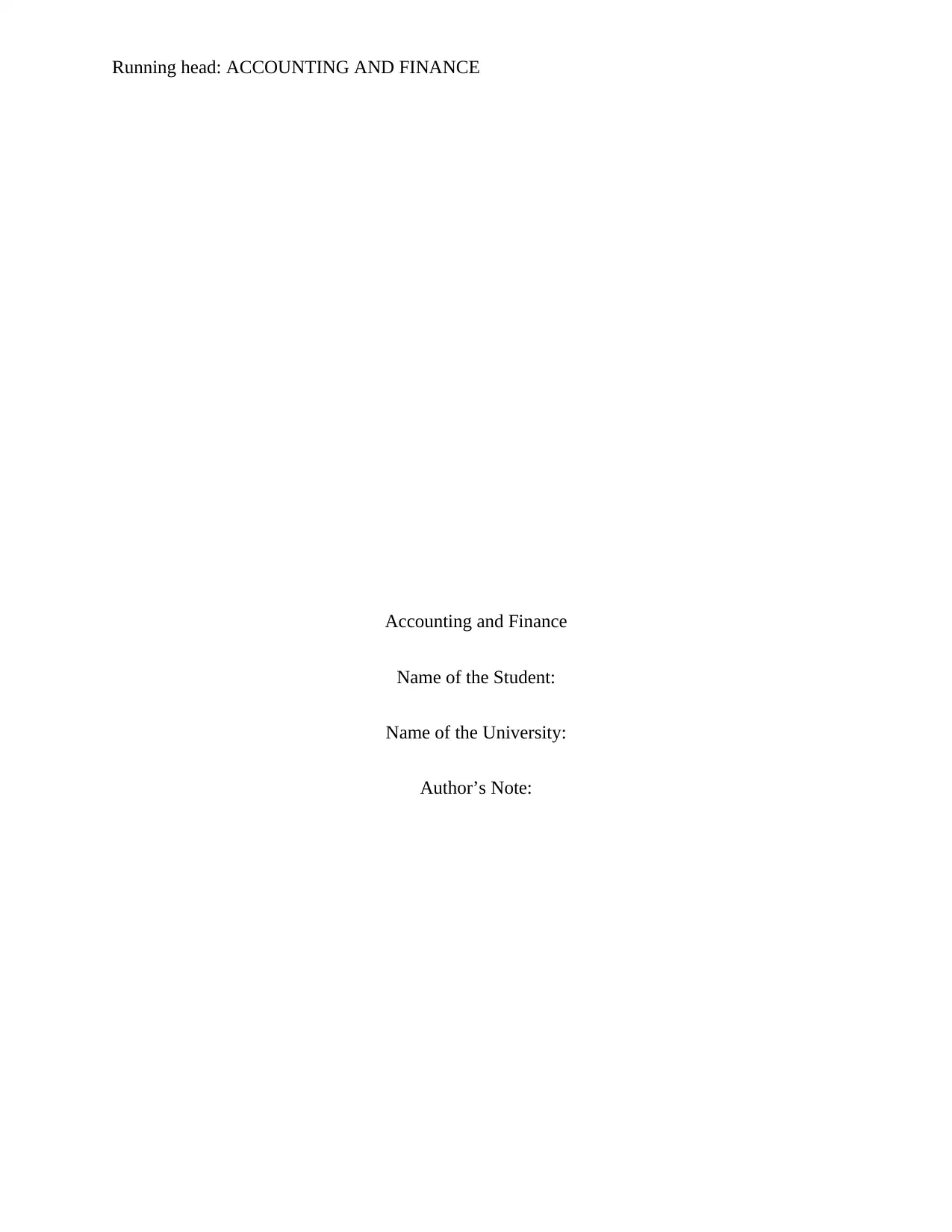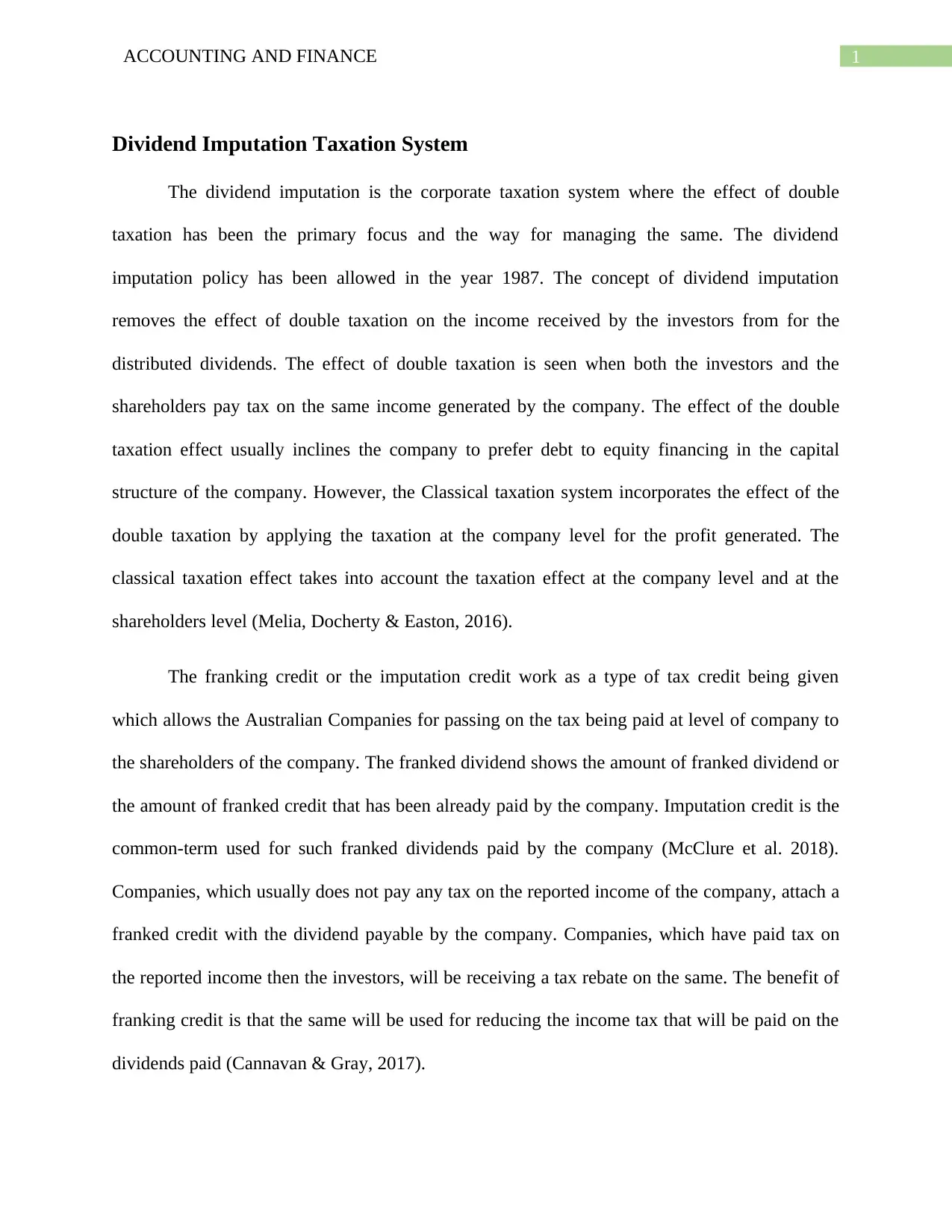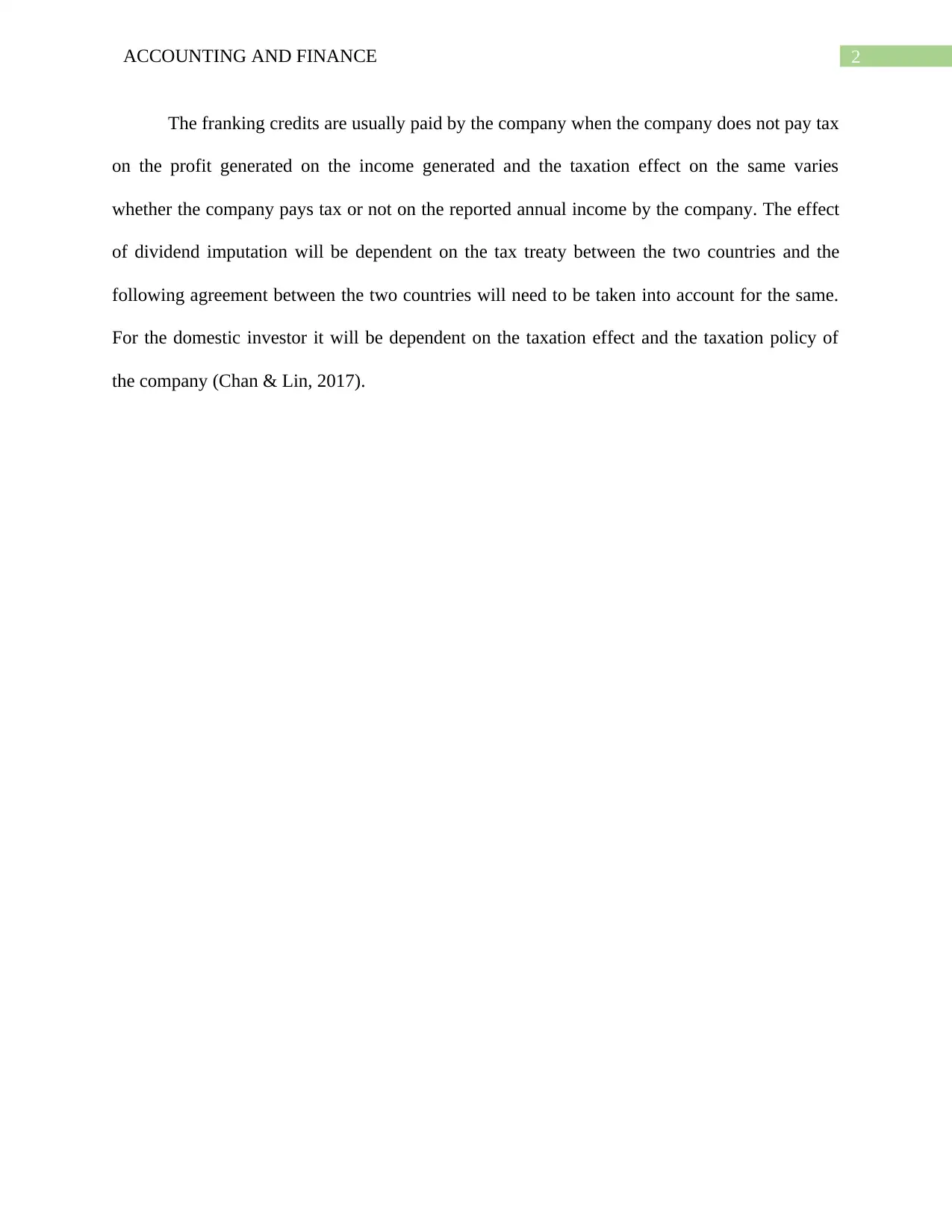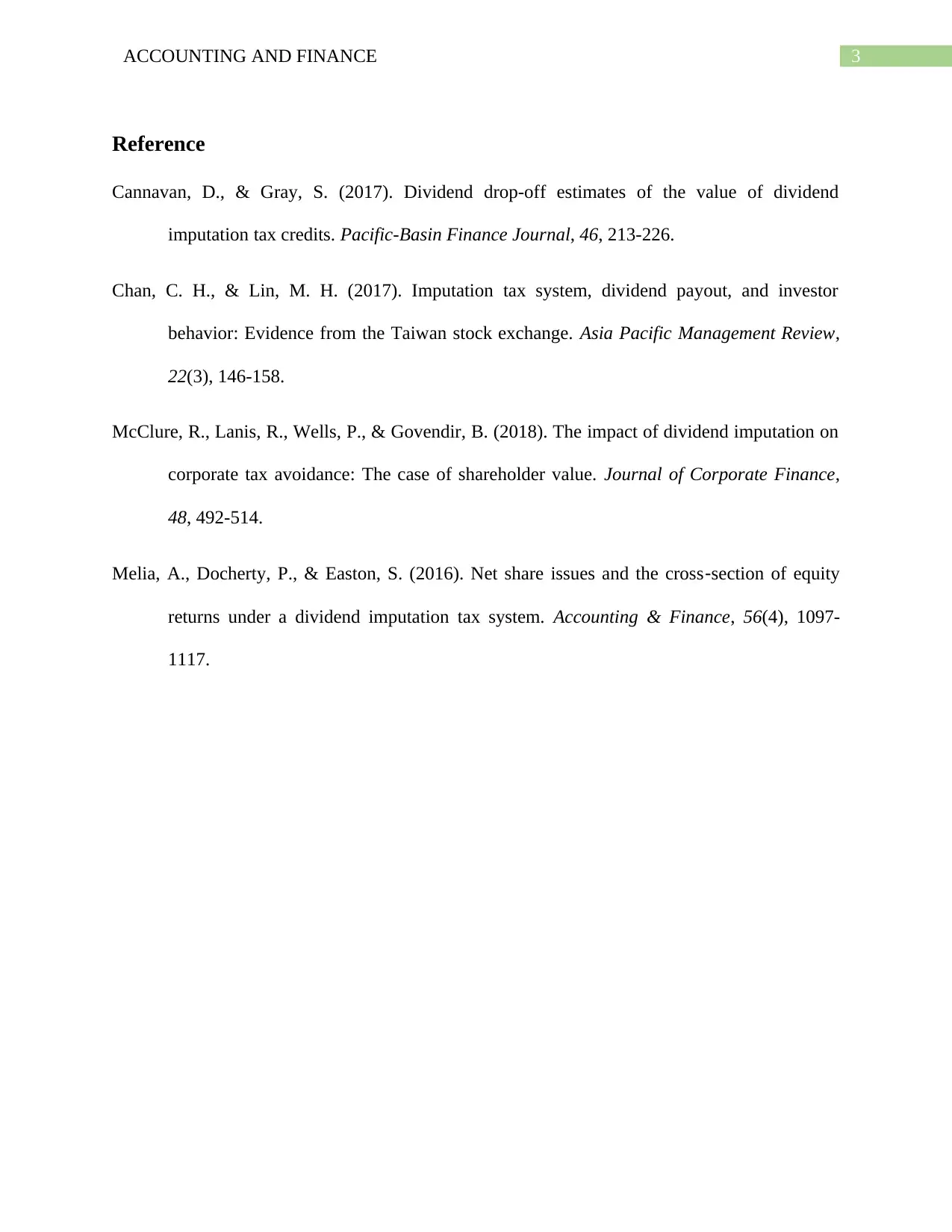Analysis of Dividend Imputation Taxation System in Accounting
VerifiedAdded on 2023/04/20
|4
|655
|354
Report
AI Summary
This report provides a detailed analysis of the dividend imputation taxation system, focusing on its role in mitigating the effects of double taxation. It discusses the introduction of the dividend imputation policy in 1987 and how it eliminates double taxation on income received by investors from distributed dividends. The report explains the function of franking credits or imputation credits, which allow Australian companies to pass on taxes paid at the company level to shareholders. It further elaborates on the conditions under which companies pay franking credits and how these credits reduce income tax on dividends. The impact of dividend imputation is contingent on the tax treaty between countries, and the report highlights considerations for both domestic and international investors, emphasizing the importance of a company's taxation policy. The document is available on Desklib, a platform offering a variety of study resources for students.
1 out of 4











![[object Object]](/_next/static/media/star-bottom.7253800d.svg)